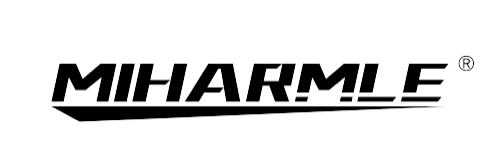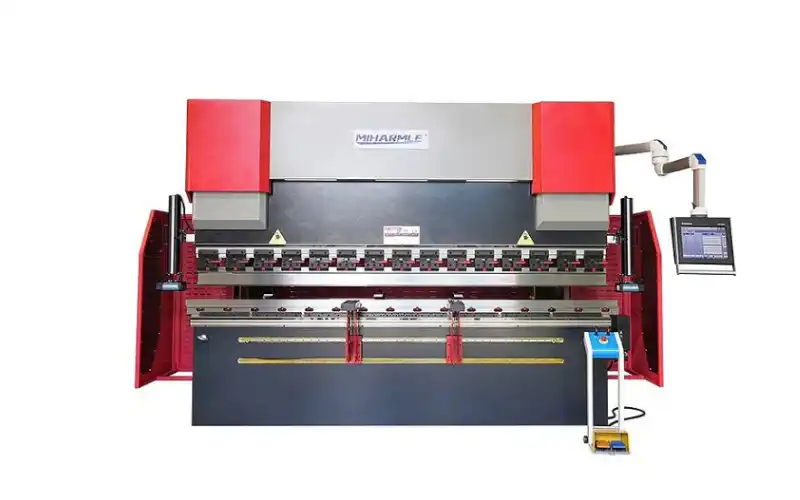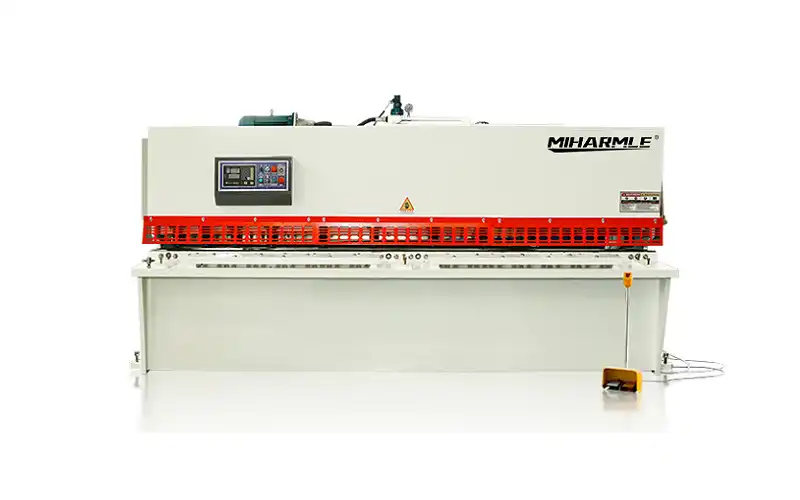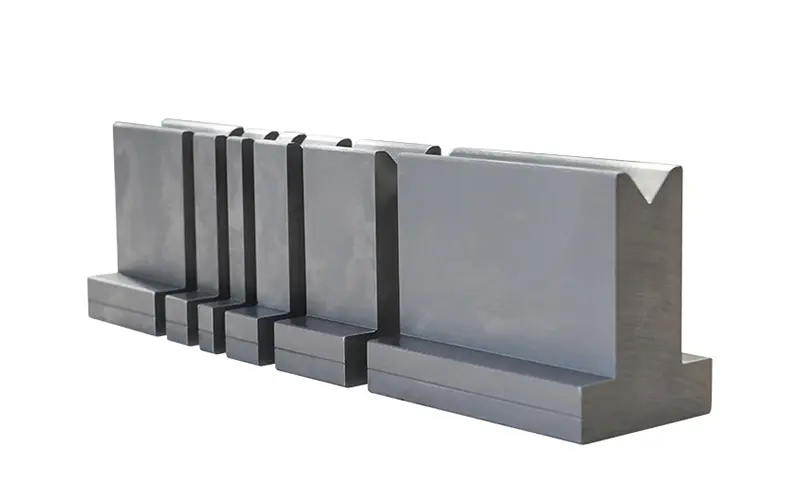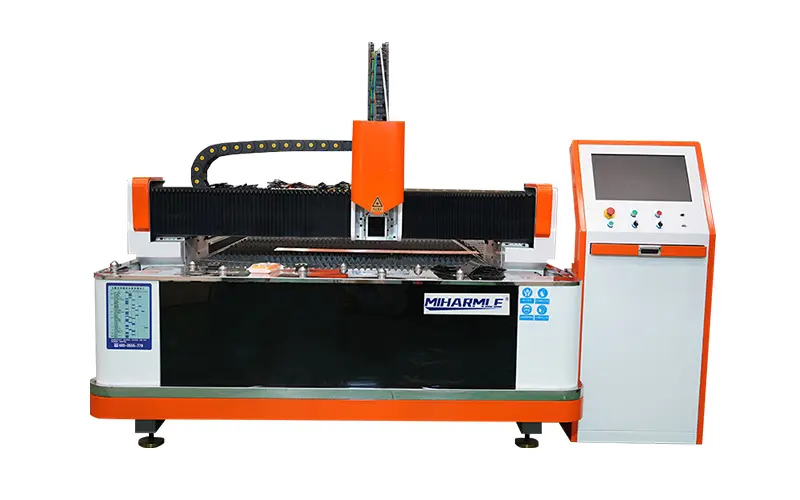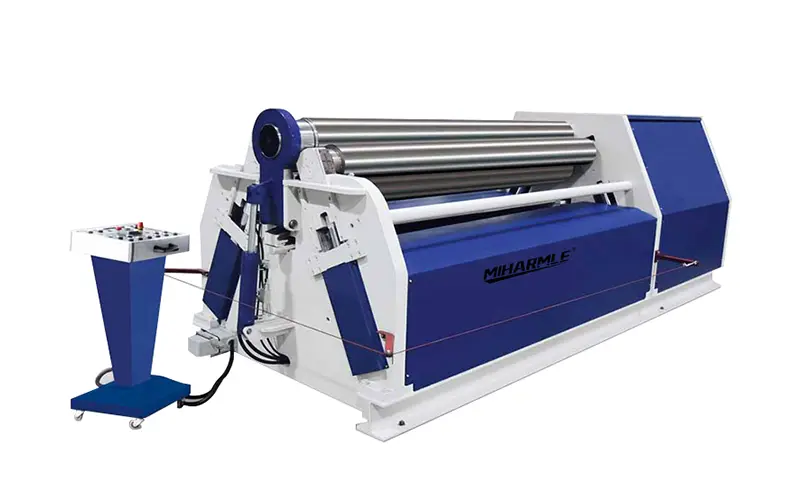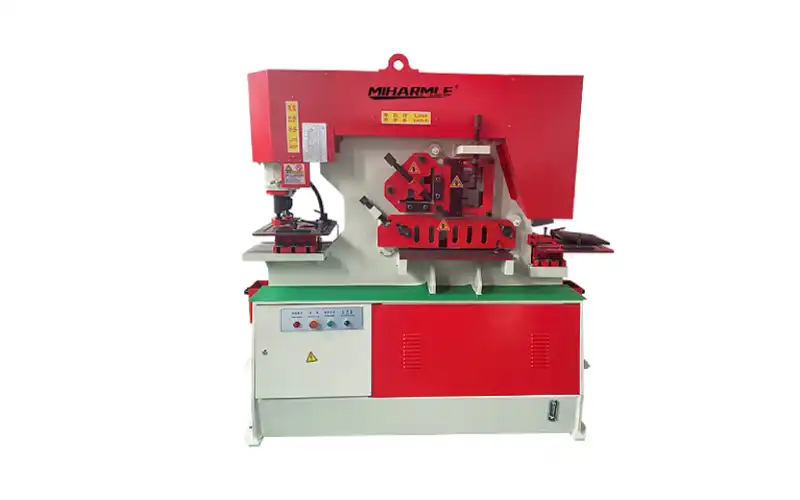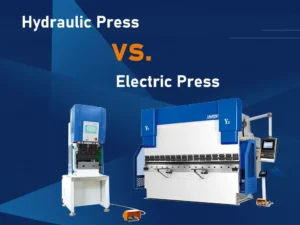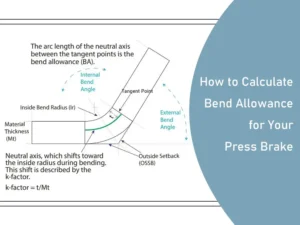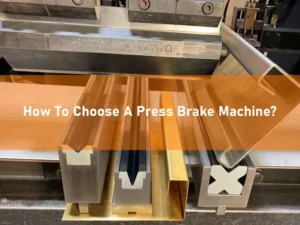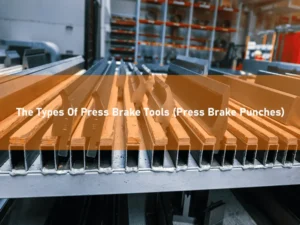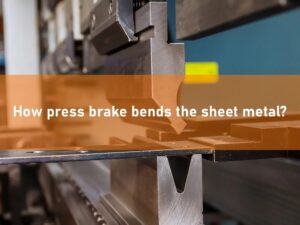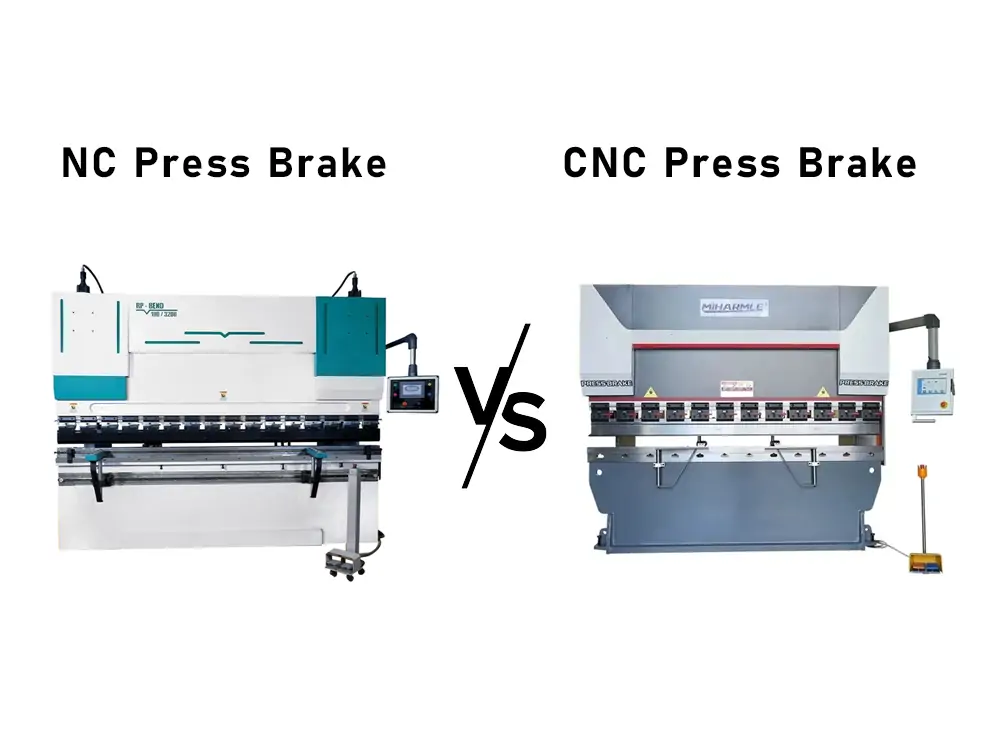
Overview
Press brakes are metalworking tools used to bend and shape sheet metal into precise angles, designs, and shapes. Two main types of these machines occupy the market: NC (numerical control) press brakes and CNC (computer numerical control) press brakes.
The main difference between NC and CNC press brakes is the control system. NC press brakes use basic programming to complete simple bending tasks and are suitable for small-scale production. In contrast, CNC press brakes utilize advanced computer numerical control technology, higher precision programming, higher accuracy and automation, and are able to handle more complex and high-volume projects.
This article will explore the main differences between NC and CNC press brakes, as well as their respective advantages and disadvantages, to help you choose the right machine for your manufacturing needs.
Understanding CNC Press Brakes and NC Press Brakes
CNC Press Brake
A CNC press brake leverages CNC operations to automate the twining and curving. Equipped with a controlling system, it enables the scheduling of intricate curl or twist sequences.
Renowned for their flexibility and efficiency, CNC press brakes can handle a range of materials.
NC Press Brake
An NC press brake, called a torsion bar press brake, depends on a numerical controlling system to automate bending operations.
Chosen for bending tasks due to their cost-effectiveness, NC press brakes feature a simpler controlling system than their CNC counterparts.
NC press brakes need involvement compared to CNC press brakes.
Pros and Cons of NC Press Brake
Pros
- Cost: NC press brakes entail an initial cost, compared to CNC press brakes.
- Simpler operation: NC press brakes feature a controlling system, making them easier to use.
- Suitable for bending: NC press brakes are well suited for bending tasks with consistent part shapes.
Cons
- Flexibility: NC press brakes offer scheduling options and are less adaptable to complex bending needs.
- Lower precision: NC press brakes provide accuracy and repeatability compared to CNC press brakes.
- Higher operator involvement: NC press brakes require hands-on operator intervention throughout the twining process.
Pros and Cons of CNC Press Brake
Pros
- Precision: CNC press brakes deliver accuracy and repeatability, making them ideal for precise tolerances and intricate part shapes.
- Increased flexibility: CNC press brakes can easily handle various materials and part complexities.
- Automated operation: CNC press breaks automate tasks reducing the need, for operator intervention.
- Programmable control: CNC press brakes provide scheduling features allowing for bending sequences and using part libraries.
Drawbacks
- Investment: CNC press brakes have a higher upfront cost than NC press brakes.
- Increased complexity: CNC press brakes feature a controlling system that may necessitate additional training and maintenance.
- Potential for increased operating expenses: CNC press brakes might incur preservation and operational costs. These costs are because of their problems and the need for software improvement and updates.
Differentiation of NC Press Brake and CNC Press Brake
| Feature | NC Press Brake | CNC Press Brake |
| Controlling System | Numerical control | Computer numerical control |
| Precision | Lower accuracy and repeatability | Higher accuracy and repeatability |
| Flexibility | Limited to simpler bending tasks | Highly flexible, suitable for complex parts |
| Scheduling | Basic scheduling options | Advanced scheduling capabilities |
| Operator Involvement | Higher operator intervention is required | Automated operation with less operator involvement |
| Cost | Lower upfront cost | Higher upfront cost |
| Maintenance | Lower maintenance requirements | Higher maintenance requirements |
How to Decide Between CNC and NC Press Brakes?
When choosing between an NC or CNC press brake, consider the factors: Accuracy If your application demands bends with tolerances.
CNC press brakes are a choice due to their enhanced precision and consistency, ensuring the quality of parts.
Speed
CNC press brakes boast cycle times, enabling them to manage bending sequences with minimal manual intervention. Opting for a CNC press brake can boost productivity and efficiency.
Applications
An NC press brake might be sufficient for jobs and enterprises. However, a CNC press brake offers versatility if you deal with various materials in terms of thickness and geometry.
Cost
NC press brakes have a cost, making them an affordable option for small businesses or those with limited capital. On the other hand, while CNC press brakes are upfront, they can deliver better long-term returns due to their increased efficiency in handling complex jobs.
Maintenance Needs
CNC press brakes require preservation and maintenance software updates. If you have the resources and expertise to effectively manage these maintenance demands, opting for a CNC press brake could be a choice.
An NC press brake might be a better option if you prefer a machine with maintenance requirements.
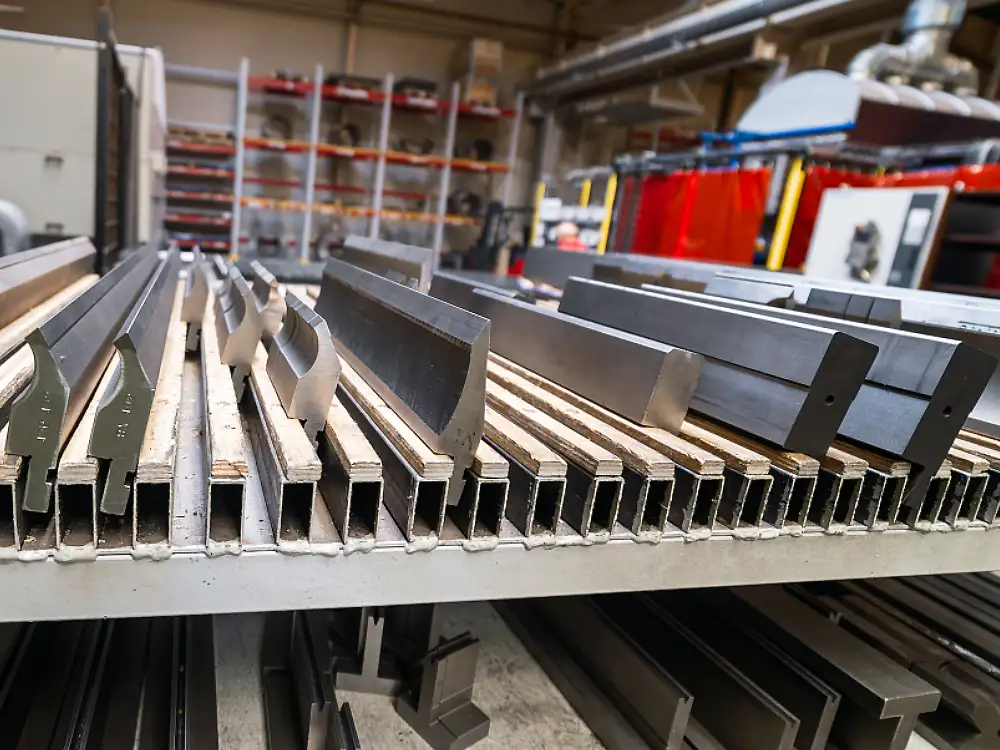
Which industries typically benefit the most from utilizing CNC press brakes?
CNC press brakes are utilized across industries due to their flexibility, accuracy, and efficiency in bending sheet metal. Some of the sectors that derive advantages from CNC press brakes include;
Metalworking
Metal manufacturing facilities use CNC press brakes for twining and forming operations. We use them to shape sheet metal into desired configurations. They can work with steel, aluminum, stainless steel, and more.
Automotive Production
The automotive sector uses CNC press brakes to make brackets, panels, enclosures, and chassis. The capability to bend sheet metal to meet requirements is indispensable in production.
Aerospace Manufacturing
In aerospace engineering, CNC press brakes are used to craft plane components such as brackets, panels, frames, and structural elements. The precision and adaptability of CNC press brakes are vital for meeting specifications.
In the realm of Electronics and Electrical
When it comes to crafting cabinets and enclosures, CNC press brakes come into play. These machines precisely bend and shape sheet metal, ensuring a fit for all components.
Exploring Construction and Architecture
In the construction and architectural sectors, manufacturers rely on CNC press brakes. They use them to fashion metal components. These machines are adept at bending metal sheets to achieve angles and shapes for construction purposes.
The World of Appliance Manufacturing
The production of appliances depends on the use of CNC press brakes. Its dependence is due to its precision and adaptability. They play a role in meeting the design requirements of each appliance.
Industries such as HVAC systems and plastics also use press brakes for their functions.
CNC press brakes have transformed manufacturing processes by boosting productivity levels. At the same time, enhancing product quality and reducing costs. Their ability to regulate bending parameters across a variety of materials enables them to create shapes. It will make them an indispensable asset in industries.
Comparing Customization and Flexibility Between CNC Press Brakes
CNC and NC press brakes play roles in metal manufacturing processes; however, they differ notably in terms of customization options and flexibility.
Understanding these distinctions can assist manufacturers in selecting the machinery for their requirements.
Customization and Adaptability of CNC Press Brakes
High Level of Customization: CNC press brakes stand out because of their nature. Operators can save and retrieve twining and winding scheduling enabling setup changes, for different tasks. This feature is especially helpful for workers and manufacturers who work on various projects.
Exceptional Flexibility
The sophisticated controlling systems of CNC press brakes make it possible for them to make an array of applications. These applications include materials, thicknesses, and bending angles with great accuracy. This flexibility is vital for workshops that manage projects demanding designs and specifications. CNC press brakes can handle shapes and multi-step bending processes. These processes thereby boost production capabilities.
Automated Tool Changeovers
Many CNC press brakes may be equipped with automated tool-changing mechanisms. It enhances their versatility by reducing setup times.
Customization and Adaptability of NC Press Brakes
Moderate Level of Customization
We configure NC press brakes to perform custom positions. However, the process involves more effort and time than that of CNC systems.
The absence of control adjustments for switching between many projects may result in slower production speeds.
Using NC press brakes may not be the option for scale or intricate tasks.
Flexibility
NC press brakes provide flexibility that works well for twining jobs. However, when it comes to projects requiring accuracy, it can result in inconsistent outcomes, especially if the operators lack expertise.
Manual Tool Changing
Making changes to the tooling on NC press brakes requires intervention. This can prolong setup times. Limit adaptability for types of tasks making them less efficient for operations that involve frequent adjustments.
On the other hand, CNC press brakes offer customization and flexibility compared to NC models. They suit workers and manufacturers seeking precision and fast turnaround times. CNC press brakes are capable of efficiently handling a range of projects.
While NC press brakes may suffice for repetitive tasks where initial expenses are a concern, they fall short of adaptability and efficiency compared to their CNC counterparts. Understanding these differences is important for businesses seeking. It will optimize their metal manufacturing methods.
Conclusion
Both NC and CNC press brakes provide automation. Enhance efficiency in sheet metal manufacturing.
However, they vary in their abilities, accuracy, and adaptability. NC press brakes offer a budget option for twining tasks, while CNC press brakes shine in managing components and high-volume production.
When deciding between an NC or CNC press brake take into account your requirements and objectives. If you focus on precision and efficiency investing in a CNC press brake could be the choice. Conversely, if you are working within a budget and dealing with parts an NC press brake could serve as a practical and cheap solution.
Ultimately the option depends on a balance between your needs and resources to identify the suited press brake, for your business requirements.
MIHARMLE CNC hydraulic bending machine, is your ideal choice
MIHARMLE is committed to providing high-precision, powerful and low-priced CNC hydraulic bending machines. We offer a variety of models to meet various complex sheet metal processing needs. If you want to get a quote, please contact us.
If you are looking for a reliable and efficient solution, please contact us to learn more about MIHARMLE CNC hydraulic bending machines and let us help you achieve excellent production goals.
